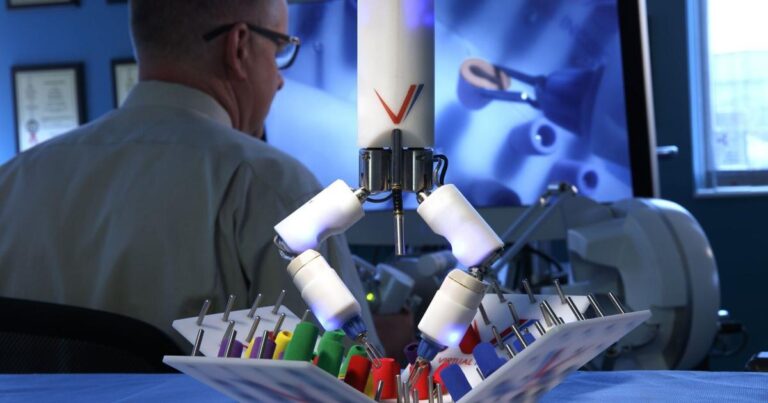
George Beadle, born in Wahoo in 1903, was an innovator. He and colleague Edward Tatum exposed a type of mold to x-rays, causing mutations in its genes. They went on to prove that this led to definite changes in enzyme formation. Their conclusion that each enzyme corresponds to a particular gene, a concept dubbed “one gene — one enzyme,” is widely regarded as a cornerstone of molecular genetics.
It earned Beadle and Tatum a share of the 1958 Nobel Prize in physiology or medicine.
Innovation can happen anywhere, but it thrives when a critical mass of people driven by curiosity comes together in spaces with the right tools and resources.
Research universities in our country are precious hubs of innovation, putting ingenuity and entrepreneurship to work. The University of Nebraska–Lincoln, Nebraska’s flagship Land-Grant, Carnegie R-1 comprehensive research university, is at work every day strengthening our economy and improving lives in Nebraska and around the globe.
People are also reading…
We continue to lead in the translation of our research to economic development. For the fifth consecutive year, the University of Nebraska system is among the top 100 institutions in the world in obtaining U.S. patents — increasing its ranking from from 77th to 64th this year. UNL researchers working with NUtech Ventures, the technology transfer office at UNL, led the way with 25 patents.
NU’s most recent annual list includes six individual patents related to a miniaturized surgical robot invented by UNL Professor of Engineering Shane Farritor, co-founder of Virtual Incision, a startup company based at Nebraska Innovation Campus.
For nearly 20 years, he and colleagues have been developing the surgical robot known as MIRA, short for “miniaturized in vivo robotic assistant.” With support from NASA, MIRA is scheduled for a test on the International Space Station in 2024.
The previous year’s patent list included an environmentally friendly method for producing isoprene — which could be used for wastewater treatment, biofuel production and bioproduct development. The technology was developed by Husker scientists Nicole Buan, Karrie Weber, Jared Aldridge and Sean Carr.
Such a culture of innovation does not happen by accident. It requires a commitment to collaborate in pursuit of cutting-edge research and dogged determination to be among the best at converting innovative ideas into real-world applications.
That’s why, 10 years ago, state leaders launched the Nebraska Innovation Campus to combine the expertise of UNL faculty with private sector resources and bring research breakthroughs to market, attract talent to our state and grow Nebraska’s workforce and economy.
A decade later, NIC now includes a world-class food innovation center, biotech connector, greenhouse innovation center, office space, Nebraska Innovation Studio maker-space, a popular conference center, a local coffee shop, and a working boutique teaching hotel. The campus is home to over 60 NIC partners, including 27 startups and 19 established businesses. NIC’s annual economic impact now surpasses $450 million.
NIC’s growth helps expand the possibilities for even greater innovation and the development of more innovators. The resources available at NIC helped UNL take a lead role with Invest Nebraska in a new $25 million federal award that will push the boundaries of robotics innovation and serve as an economic driver for our state. UNL’s $14.8 million portion of the award includes $9.3 million to build out robotics-related research and teaching spaces in Kiewit Hall, Scott Engineering Center and Splinter Labs.
Growing capacity for innovation will also benefit Nebraska agriculture. The U.S. Department of Agriculture’s proposed National Center for Precision, Resilient and Regenerative Agriculture and a public-private partnership-funded companion agricultural innovation facility are being planned for construction on Nebraska Innovation Campus.
The positive implications for this new companion facility add up, with an estimated economic impact of $1 billion annually, $170 million in labor income for Nebraskans, and the creation of about 3,200 Nebraska jobs.
It’s clear that where innovation happens under the right conditions, new opportunities to innovate can multiply — drawing greater interest, resources and talent, which all factor into success in turning ideas into commercialization and economic growth. With UNL as a dynamic hub, our state is rapidly expanding opportunities for innovation with the potential to improve life for all Nebraskans.
The legacy of Nebraskan and UNL alumnus George Beadle lives on in the halls of the Beadle Center on UNL’s City Campus and on our East Campus, where a new life-sized sculpture of Beadle resides. His commitment to science and discovery is embodied in NIC. And like all great innovation, we can pinpoint when and where Beadle’s began, but its impact on the world never ends.
Ronnie D. Green is the chancellor of the University of Nebraska-Lincoln.












